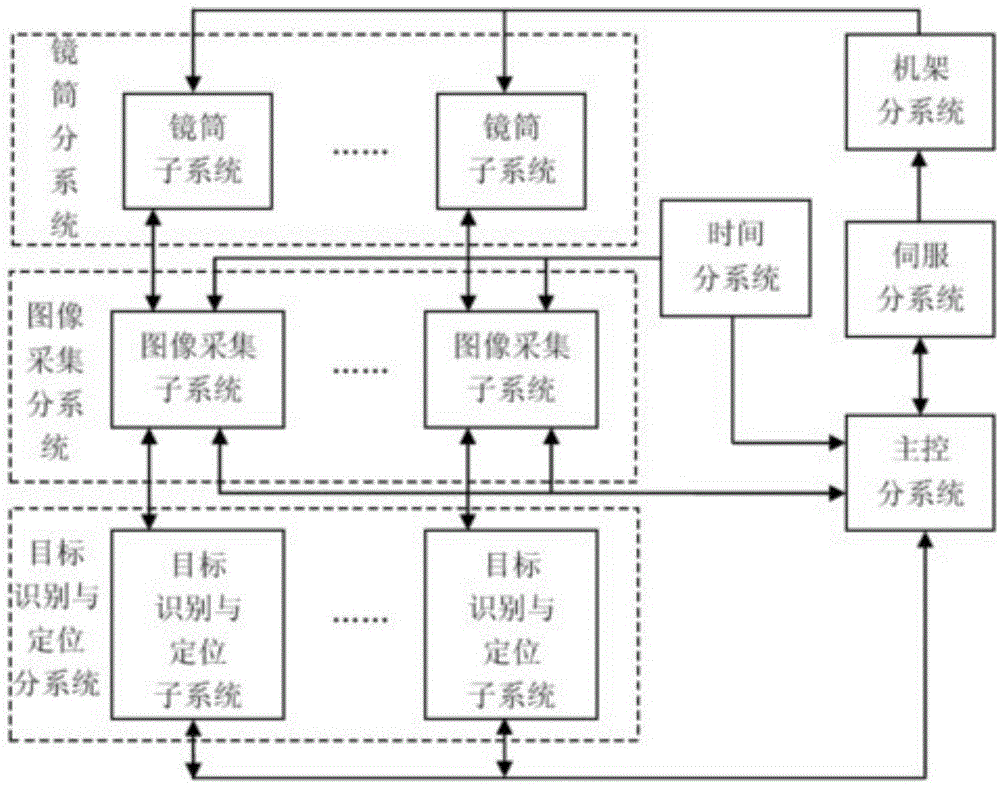Photoelectric observing system for space debris with array structures
A technology of space debris and array structure, applied in closed-circuit television systems, television, optics, etc., can solve the problems of low observation efficiency and achieve the effect of high cost performance, high reliability, and wide coverage of airspace
- Summary
- Abstract
- Description
- Claims
- Application Information
AI Technical Summary
Problems solved by technology
Method used
Image
Examples
Embodiment 1
[0026] The array-structured space debris photoelectric observation system consists of the following seven subsystems: lens tube subsystem, rack subsystem, time subsystem, servo subsystem, image acquisition subsystem, target recognition and positioning subsystem, and main control subsystem .
[0027] The lens barrel subsystem is composed of 8 lens barrel subsystems, which are installed on a rack subsystem; the 8 lens barrel subsystems are arranged and combined according to a certain array structure, and the elevation angles of each lens barrel subsystem are the same, and the central elevation angle is 25°. On the horizontal plane, the surveillance airspaces are connected to each other.
[0028] The lens barrel subsystem is equipped with a scientific grade CCD camera with a pixel number of 3056×3056 and a size of 12μm×μm. It adopts a refractive optical structure with a diameter of 150mm and a focal length of 150mm. The surveillance sky area is greater than or equal to 14°×14°. ...
PUM
 Login to View More
Login to View More Abstract
Description
Claims
Application Information
 Login to View More
Login to View More - R&D
- Intellectual Property
- Life Sciences
- Materials
- Tech Scout
- Unparalleled Data Quality
- Higher Quality Content
- 60% Fewer Hallucinations
Browse by: Latest US Patents, China's latest patents, Technical Efficacy Thesaurus, Application Domain, Technology Topic, Popular Technical Reports.
© 2025 PatSnap. All rights reserved.Legal|Privacy policy|Modern Slavery Act Transparency Statement|Sitemap|About US| Contact US: help@patsnap.com

